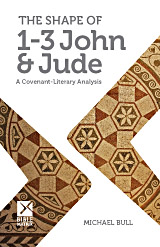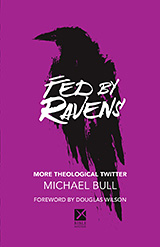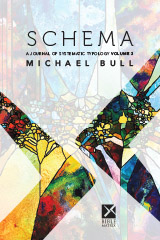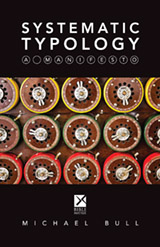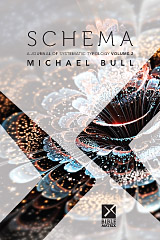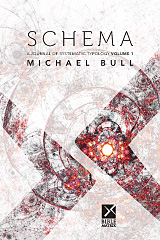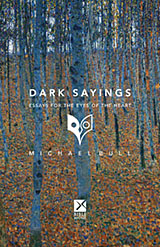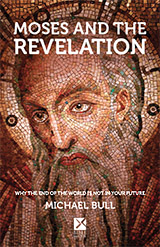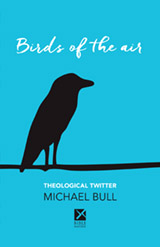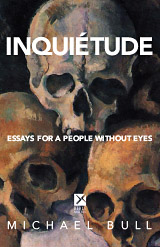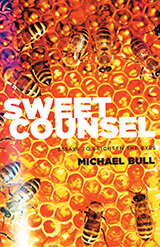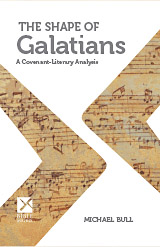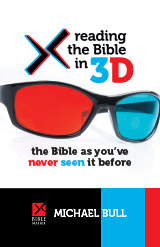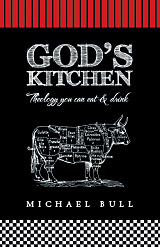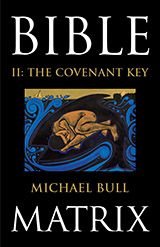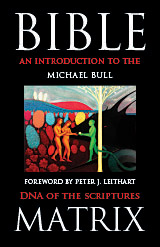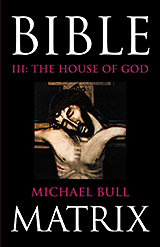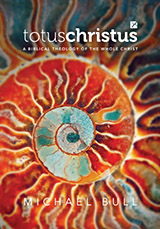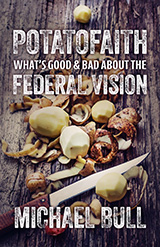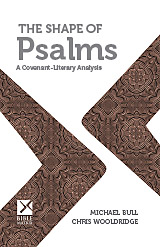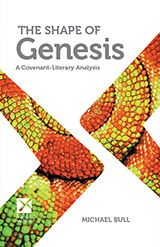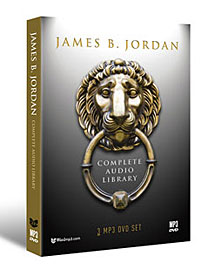Nov
28
2009

or Drive-By Typology
——————————————————————————-
Rome has this whole nutty Oedipus thing going. They want the infantile security of Mary’s breast when God calls them to grow up, to be as individuals men worthy of a bride’s affections, and corporately a bride who adores only her Husband!
——————————————————————————-
Verifying typological connections is a tricky business. Like driving, it is not a skill but an art. This means that although there are certain rules to follow, above all of that there are situations where being steeped in the types and structures of the Bible is the only way to proceed with wisdom. James Jordan recently commented that any such exegesis should be carried out within the conversation of the church, and:
“The popular notion that everyone should be able to read and exegete the Bible equally, as a result of learning some so-called “science” of hermeneutics, is about as stupid as thinking everyone can write music like Bach and Beethoven by studying the rules of harmony and counterpoint; or that anyone can be a Shakespeare.”
I’m no Shakespeare, but James Jordan’s identification of the biblical “universals” and an explanation of biblical types has helped me enormously. The Bible matrix structure has also helped me enormously. They are typological “systematics.” It is this kind of grounding, like practising scales on a piano, that enables us to more easily identify abuses of typology — such as the claim that Mary is a “New Eve.” Dischordant notes can be used to great effect in great music, but it takes a practised musician to know when it is within a greater “harmony” and when it is not. This is beyond the basic scales.
Continue reading
5 comments | tags: Athaliah, Baptism, Bible Matrix, Hermeneutics, James Jordan, Mary, Peter Leithart, Roman Catholicism, Systematic typology, Totus Christus | posted in Biblical Theology
Oct
30
2009
or How Not to Read the Bible

We moderns have not been trained in how to read texts, let alone ancient ones. Reading texts requires not only an understanding of what is said but an appreciation of how it is said. Consequently, the sacred texts are simply scanned for information that supports what we have already received or they are mishandled entirely. T. David Gordon asserts that this is the reason modern preaching is so disappointing and unengaging. See Why Johnny Can’t Preach and Threshing the Text. We won’t allow the Bible to say anything new.
Continue reading
Comments Off | tags: Church Discipline, Compromise, Hermeneutics, Nehemiah, T. David Gordon | posted in Biblical Theology, Christian Life
Oct
20
2009
or Submissible Evidence According to Paul

“…it is instructive that when the issue was so decisively drawn with his legalist opponents, Paul, at the climax of his argument, appealed to an allegory to refute the gainsayers of grace…”
Warren Gage writes:
Continue reading
Comments Off | tags: Galatians, Hermeneutics, Paul, Typology, Warren Gage | posted in Biblical Theology, Quotes
Oct
7
2009
or OT as Mostly an Accommodation to Ancient Pop-Culture?

The Modern Evangelical Bible Academy, Model 2300X.
In his new book Deep Exegesis, Peter Leithart has a great chapter called “The Text is a Husk: Modern Hermeneutics”. To distill his chapter down to its basic essence, he says that distilling the Scriptures down to their basic essence is not what God intends. The text is not a kernel hidden in a husk that can be discarded. We are not to heave our Bibles down to the threshingfloor. Every word of Scripture has significance.
Leithart presents a fascinating history of this methodology and the philosophies behind its various forms. Then he turns on “the good guys.”
Continue reading
1 comment | tags: Hermeneutics, Peter Leithart | posted in Biblical Theology, Quotes
Sep
18
2009
Excerpts from Peter Leithart’s new book, Deep Exegesis: The Mystery of Reading Scripture:
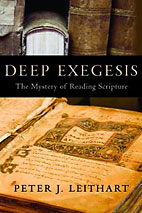 “My insight, if such it is, into the workings of humour was reinforced and generalised when I watched Shrek, a movie that I now tell my students is a gold mine of hermeneutical insight. All the funny parts of that film assume that the viewer has information the movie does not provide, information from three main sources: nursery rhymes, fairy tales, and popular culture, especially movies…”
“My insight, if such it is, into the workings of humour was reinforced and generalised when I watched Shrek, a movie that I now tell my students is a gold mine of hermeneutical insight. All the funny parts of that film assume that the viewer has information the movie does not provide, information from three main sources: nursery rhymes, fairy tales, and popular culture, especially movies…”
Johannine Jokes
…How does all this apply to our reading of Scripture? Scripture has the same literary properties as the texts we have been examining. Just as Eliot read Dante who read Virgil who read Homer, so Matthew had read Jeremiah, who knew Kings (or wrote it), and the writer of Kings had read the Hexateuch. Let us look at some examples. Let me tell some biblical jokes, again taken from John 9.
Continue reading
Comments Off | tags: Culture, Hermeneutics, John, Joke, Peter Leithart | posted in Biblical Theology, Quotes
Jul
27
2009
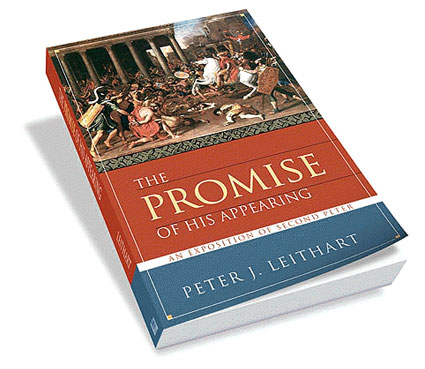
———————————————————————————
“…preterism is not merely a way of interpreting New Testament prophecy but also provides a framework for understanding New Testament theology as a whole.”
———————————————————————————
The Bible was written for us, not to us. This includes the New Testament. We have evangelicals who take both Old and New Testament prophecies concerning Israel and mistakenly apply them to modern Jews (dispensationalism). But then we also have evangelicals who think that the imminent predictions of judgment throughout the New Testament are still somehow “imminent.” This includes most conservative Christian theologians (even smart guys like D. A. Carson), who treat the epistles as though they were written to us. They make the same error as the dispensationalists, albeit on a smaller scale. This misreads the New Testament. It replaces interpretation with application, and unwittingly makes many verses unnecessarily mysterious to modern Christians. Continue reading
2 comments | tags: Dispensationalism, Hermeneutics, Old Testament, Peter Leithart, Revelation | posted in Against Hyperpreterism, Biblical Theology, The Last Days
Apr
16
2009
What about the Grammatical Historical Method?
“I affirm and use the grammatical historical method in all my study of Scriptures, but I do not think it is the only method to use in our study or sermon preparation. If the Bible is one history with many sub-histories, then the grammatical historical method focuses too much on the subs and little on the one history. It draws our attention to the locus without seeing the larger picture. It focuses on the tree while missing the forest. Typology, on the other hand, working with GHM, gives validity to the Biblical language and the Biblical worldview.”
Uri Brito, http://apologus.wordpress.com
Comments Off | tags: Hermeneutics, Typology, Uri Brito | posted in Quotes
Apr
16
2009
The Mission
or World Without End?

With all the fuss between hyperpreterism and preterism, is it possible both positions are basically right?
Hyperpreterists realise that the apostles were expecting an immiment resurrection, and the partials have to treat verses inconsistently – applying some to AD70 and some to the end of history. But then the hypers have to squish the millennium into AD70 like a fairground mirror. They believe all prophecy has been fulfilled. Not good.
Continue reading
Comments Off | tags: AD70, Against Hyperpreterism, Hermeneutics, Judgment, Moses | posted in Against Hyperpreterism, Biblical Theology, The Last Days
Apr
14
2009
or The Resurrection of Christ: Get Over It.
 The resurrection of Christ is the linchpin upon which all of Christianity depends. It is the point of the spear when it comes to evangelism.
The resurrection of Christ is the linchpin upon which all of Christianity depends. It is the point of the spear when it comes to evangelism.
But when the best theologians spend much of their time philosophising about its basic implications, their thinking divorced from most of the Bible, and relying instead upon Jewish fables and other ancient writings to form their opinions, we have a problem. When the cream of the crop are gagging on the milk, we have a problem.
Continue reading
Comments Off | tags: Hermeneutics, James Jordan, Paul, Resurrection, Typology, Uri Brito | posted in Biblical Theology
Apr
11
2009
Or, Reading the Bible without imposing your own worldview.
It seems we either read the Bible carefully but with the blinkers of remnant higher criticism (modernism), or we ‘get’ the narrative and typology but disregard the basic boundaries of responsible interpretation (postmodernism). Rich Lusk writes:
Biblical Theology requires us to learn to read the biblical narrative from within. We are insiders to the story of Scripture. It’s our story. We have to learn to read the Bible canonically. We have to allow the Word to absorb the world rather than allowing the world to absorb the Word. We have to take Scripture’s outlook as normative rather than imposing another worldview on our reading of Scripture. We must learn to read the Bible organically, in terms of itself. We should read the Bible the same way Peter, Susan, Lucy, and Edmond would read The Chronicles of Narnia: as a story not only for us, but about us.
Reading the Bible organically means reading it intertextually and typologically. Intertextual reading listens for echoes of and allusions to other passages within the canon, using Scripture to interpret Scripture. Typological reading looks for repeating patterns within the unfolding storyline of Scripture. Biblical typology is focused on totus Christus — the whole Christ, head and body, Jesus and the church. Typology means reading the Bible on its own terms, as a revelation of the suffering and glory of Christ (Lk. 24). As we move from type(s) to antitype, there is both correspondence and escalation.
Read his full article here.
Comments Off | tags: Biblical worldview, Hermeneutics, Higher Criticism, Modernism, Rich Lusk, Totus Christus, Typology | posted in Biblical Theology









